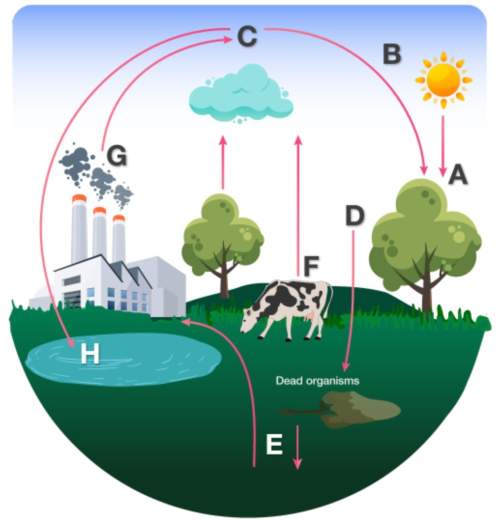
Chemistry, 19.01.2020 07:31 winterrs12
Using the diagram above, match the description to the corresponding location in the carbon cycle model. provide the letter only.
1. carbon dioxide is converted to sugar used for food.
2. carbon trapped in fossil fuels is converted to carbon dioxide.
3. organic carbon is converted to fossil fuels.
4. carbon dioxide is converted to carbonates.
5. sugar is broken down and converted to carbon dioxide.
1. location
2. location
3. location
4. location
5. location


Answers: 1


Other questions on the subject: Chemistry

Chemistry, 21.06.2019 22:30, mimireds5419
1. combine iron and copper (ii) sulfate solution. (hint: iron will form the iron (iii) ion) fe + cuso4 → 2. combine lead (ii) nitrate and potassium iodide solutions. pb(no3)2+ kl → 3. combine magnesium metal and hydrochloric acid solution. mg + hcl → 4. electrolysis (splitting) of water. h2o → 5. burning magnesium. mg + o2 →
Answers: 3

Chemistry, 21.06.2019 23:30, tylerineedhelp
Ihat will happen if i added baking soda to vinegar
Answers: 2

Chemistry, 22.06.2019 00:00, 2024daisjavien
Which actions would increase the rate at salt dissolves in water? stir the water? crush the salt? use less water? heat the water? cool the salt
Answers: 3
You know the right answer?
Using the diagram above, match the description to the corresponding location in the carbon cycle mod...
Questions in other subjects:

Social Studies, 23.03.2021 17:50

Mathematics, 23.03.2021 17:50

Chemistry, 23.03.2021 17:50

Mathematics, 23.03.2021 17:50

Biology, 23.03.2021 17:50

History, 23.03.2021 17:50


Mathematics, 23.03.2021 17:50




